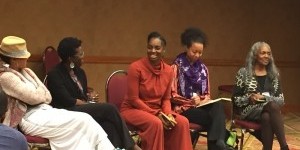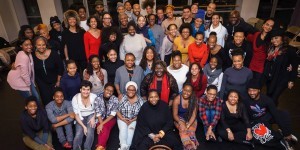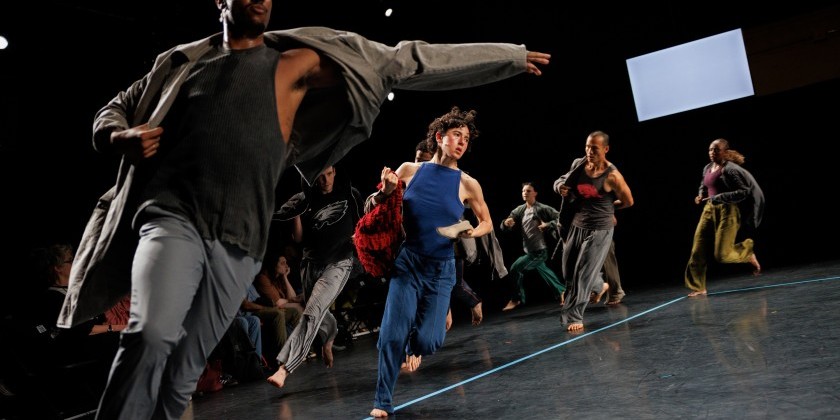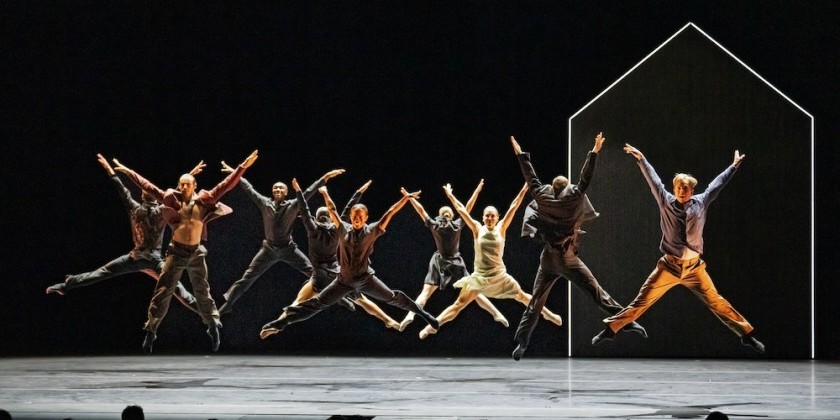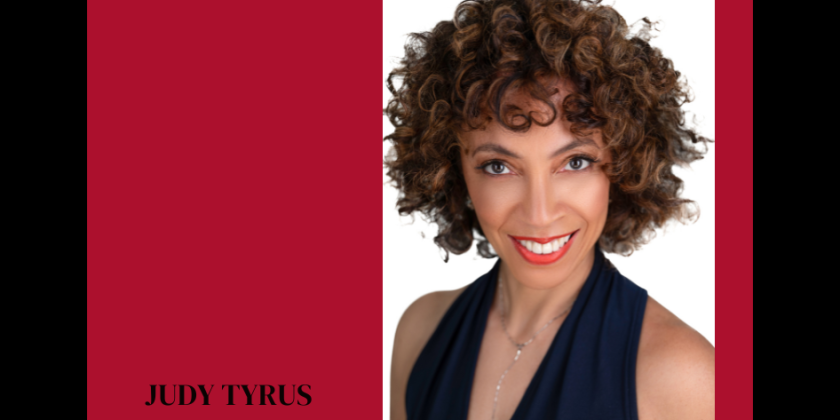Things I am Learning About APAP and My Dance Community.

Are We (All) a Community of Makers?
Top photo: (L to R) Actor, playwright, professor, and APAP panel moderator, Anna Deavere Smith; opera singer, Carla Dirlikov Canales; Paula Kreger, President/CEO of PBS; Bill T. Jones, of New York Live Arts and Bill T. Jones/ Arnie Zane Dance Company (To see this APAP panel in its entirety and for info re seeing other APAP events check out HowlRound)
2016 marks the first time in a long while that I’ve attended the Association of Performing Arts Presenters (APAP) annual conference. Typically, this dance enthusiast avoids the event. In the past, my fear of crowds kept me away. (This year alone 45,000 industry leaders, artists, managers, agents, presenters and fans descended on the city.) Also, my fear of freezing (in crowds) was reason enough to stay at home. (APAP takes place in January when northeast climes are, well, not at their balmiest.)
Crowd and freezing angst aside, my distance from APAP is largely the result of a residual bad taste from showing work there many moons ago. For numerous presenting artists, especially in smaller companies, APAP, now with over 1,000 artist showcases, can feel awkward at best. The consumer mall-like setting, with audience members milling in and out of performances (sometimes right in the middle) is not optimal for aesthetic communication. Time and production limitations are imposed. Companies are viewed in speedy intervals. Can artists present their work in its best light? Many leave wondering if they were seen. And isn’t that the point of the event, for artists to be seen, understood, and hired? After years away from my original role and blessed with a tad more perspective, I am not so sure.
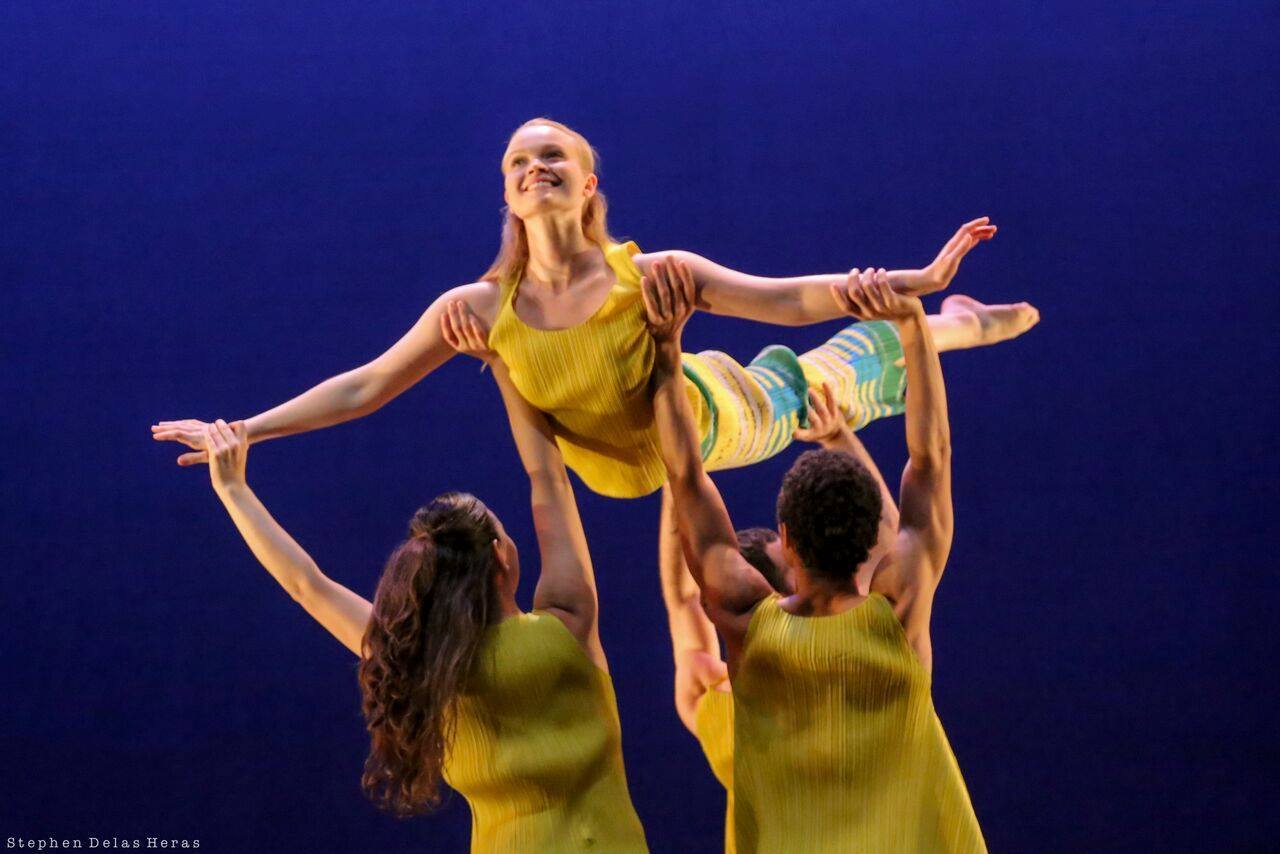
APAP 2016 Showcase Highlight: Henning Rübsam's Company SENSEDANCE in And There Was Morning;
Photo Stepen Delas Heras
With easy charm, Henning Rübsam welcomed his showcase audience, speaking of the surge of creative energy that came to him after the death of his father. "Out of an audition of 120 dancers," he said," I chose these four performers - they had a glow." The enchanting music through which SENSEDANCE'S quartet romped was beautifully composed by Beata Moon. The colorful, distinctively pleated costumes were designed by Issey Miyake. Inserting some business into the conversation of art, (he spoke of dancing with icons Alwin Nikolais and Beverly Blossom) Rübsam laid out a few international touring plans and underscored the company's flexibility at working in both small and large venues -- very helpful for presenters. Thoughtful, witty, lyrical, and bright, And There Was Morning (and its young dancers: Maurice Dawkins, John Raffles Durbin,Luz Guillen, and Kristen Stuart) was a pleasure for the eye, ear, and heart.
If you are an artist choosing to showcase at APAP, develop a strategy. Know why you’re attending; figure out how to best share and talk about your work in brief; decide how much time and money you are willing to commit; and don’t take the massive convention personally. I suggest that you don’t limit participation to a showcase performance. Engage in other aspects of the experience. You are not alone. Connecting with others can be can be enlightening and energizing. Practically speaking, there is more than one way to get a gig. Relationships matter.
APAP 2016 Showcase Highlight: Rafael Reyes in A Mexican Affair, produced by Convergence Theatre Collective & with Capulli Mexican Dance Company, Photos by C. Jowers and Gloria Villareal.
After graduating with a degree in industrial engineering, Rafa Reyes, from Cordoba, Mexico, decided to devote his life to musical theater. Today he lives and performs in NYC. It's a story as "cheesy as a quesadilla", says the cabaret singer between numbers during "A Mexican Affair." His evening features well-known songs by Mexican and US composers and celebrates (despite Donald Trump) our countries' mutual love. In the audience of this intimate Convergence Theatre Collective production, I was wowed by Reyes humor, suave vocal style, and his band, all amazing artists, many of them Grammy nominees. CTC, run by Jeremy Williams, joined APAP this year. Instead of quick showcases, Williams decided to produce a suite of shows at the TheaterLab and Gibney 890 Broadway. Since he wanted to run previews anyway, why not do so during the conference for potential presenters? The next day, in an Aztec ceremony amidst a chorus of men with enormous feather head-dresses, I was surprised to find Reyes performing with the Capulli Mexican Dance Company. Talk about a whopper of a transition. (This time, Williams sat in the audience purely as a fan.)
For any devotee (showcasing artist or not) whose passion is dance, theater, or music, there is much to glean from APAP. Opportunities abound to learn and share ideas. One can catch multitudes of free performances; discover artists and re-discover favorites; meet friends; reach out to new people in the arts field (remember 45,000 industry leaders); attend free workshops geared to creative people, which are led by creative people (See Dance /USA and Camille Brown's The Gathering ); attend the special curated arts festivals associated with APAP (like COIL, American Realness, Under the Radar; American Dance Platform); view —for free— live stream informative sessions with luminary panelists; and revel in the fact that most of discussions in this positively charged atmosphere (other than,“Where shall we go to eat?”) are about practicing art.
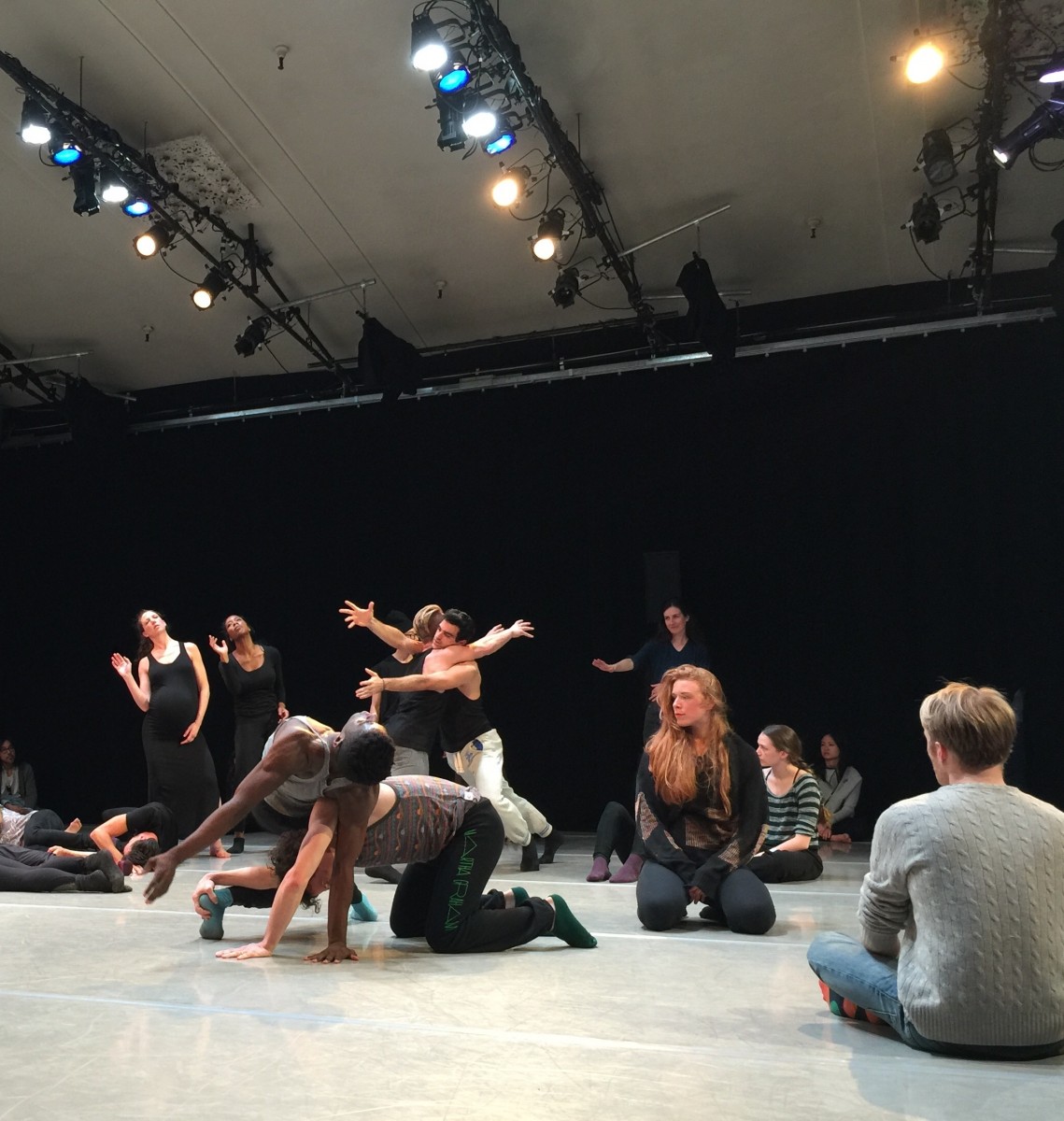
APAP 2016 Showcase Highlight: Excavation Site: Martha Graham U.S.A. A COIL Presentation with the New Museum: Choreography: Michael Kliën, Dramaturgy: Steve Valk, Electronic Score:Volkmar Klien; Dancers: company members past and present: Photo: C. Jowers
Anyone familiar with Martha Graham Dance Company performances might be shocked to find themselves in the middle of a Graham group improv. In close sweaty quarters, nary a contraction or release in sight, with no golden dance-belted men or elegantly coiffed drama queens about, the operative word - at least at first - is, "Huh?" After a bit of time though the Excavation experience overtakes you. Watching the dancers follow their bliss becomes mesmerising, meditative, even transforming. Some of the "audience" are compelled to join in. (If I had stayed a half-an-hour longer I might have too.) It's clear that these artists, whether currently performing in the group or not, are connected by something larger than technique and choreography. What is that essence? Micheal Kliën and team attempt to lead us to a deeper understanding through immersion. In other rooms at the studio site there are low tables filled with Graham books and non-performance films of Martha moving on stage with Erick Hawkins (perhaps improvising?). How compelling to learn of Graham's inner-life by moving with her descendants, reading her books, and seeing her dance.
This year, the message from the very onset was one of inclusiveness. The convention’s theme MAKERS, specifically acknowledged that all who bring art to communities (from researcher to educator, presenter to vlogger) are makers of art with a capital M.
During the opening evening’s presentation, Daniel Bernard Roumain, renowned musician, composer, and one of the co-chairs of APAP 2016, reminded everyone in attendance of the common goal — to bring transformative experiences of the arts to all people. And in light of the conference falling on Martin Luther King’s holiday, speakers highlighted the performing arts as a means to bring progressive issues to light; build bridges in our communities; and advocate for social justice.
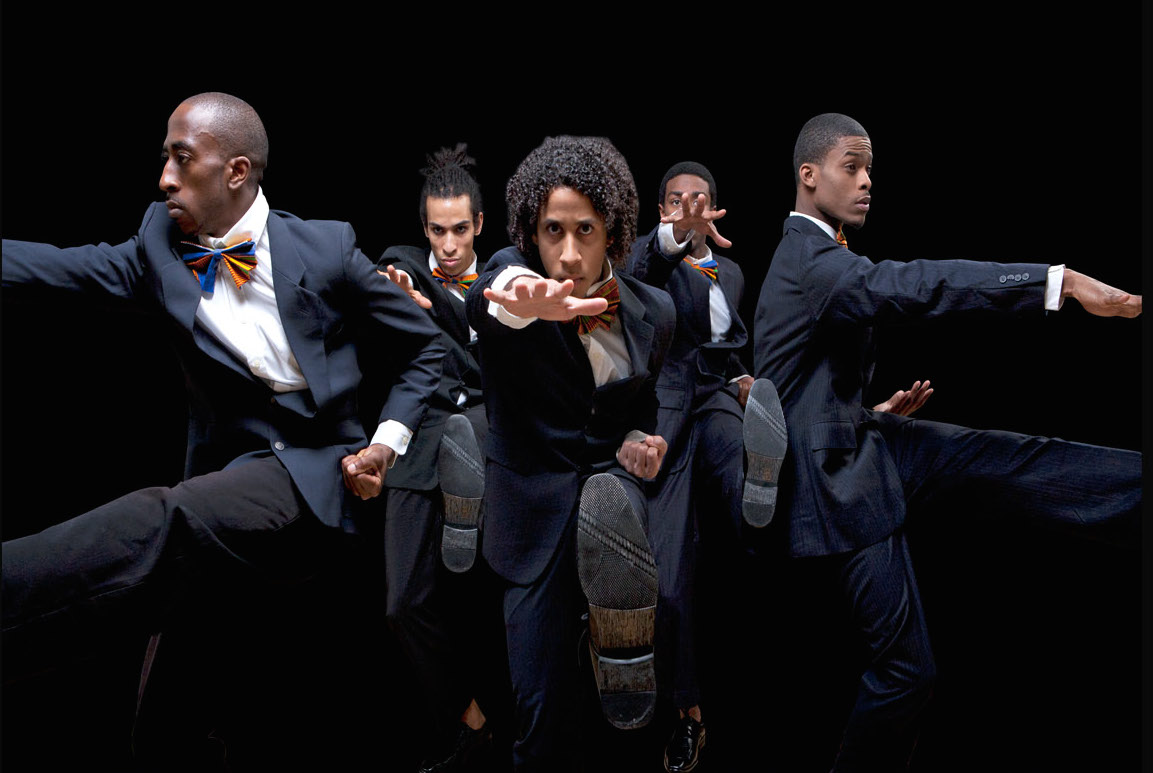
APAP 2016 Showcase Highlight: Christal Brown's The Opulence of Integrity: Picture from the company website.
I was delighted to catch Christal Brown's choreography, if ever so briefly, at APAP. The Opulence of Integrity, her foray into all male dance, is dedicated to Mohammed Ali, the boxer, poet, and activist. The work explores Ali's life and legacy while showcasing the greatness of men of color. In her excerpt, Brown's dancers burst forth magnificently from the air, often punching out at it. Elegant phrasing was accentuated by moments of precarious balance where the men appeared to be holding on for their lives. Fighting to be, fighting for, against, and because - Brown reveals the inner and outer struggles of the men in a riveting fashion. Much of the activitly is led by Riccardo Valentine, an exceptional performer. Brown said goodbye to the audience wishing us all to find opulence in our lives, then mentioned because of this piece, she created a group called M.O.B., to support mothers of brown boys. Important, moving work from a woman of abundant talent and integrity.
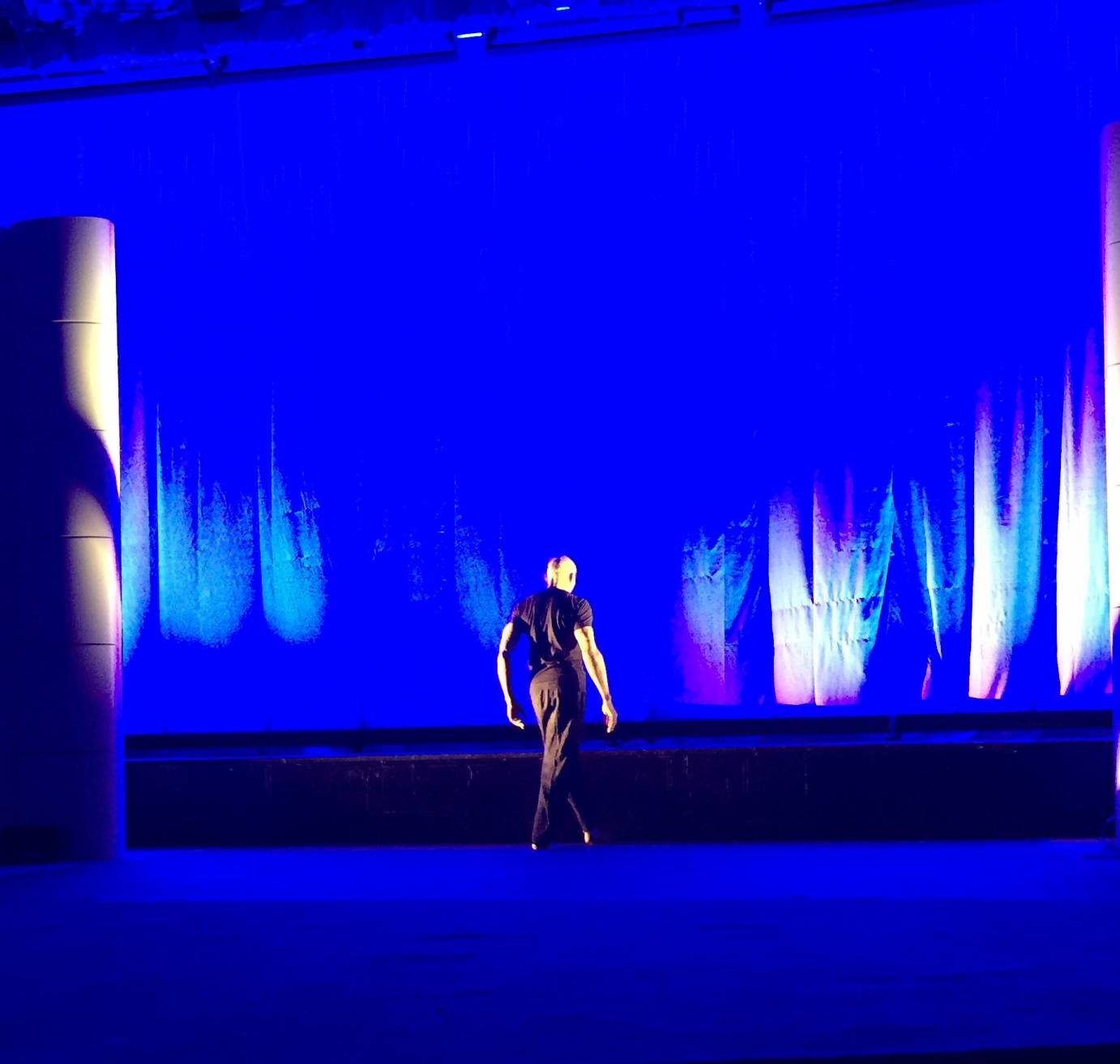
Addressing the complexity and splintered nature of our world through the performing arts can be wearying, but if the field doesn’t work to do so, how can it remain meaningful to future generations? While some appear not to have received this memo, many leaders are aware of the challenges, and moving to the meet them. As we witness the vast, monied film industry grappling to acknowledge and appreciate the diversity of of its artists and audiences, we can be proud of the steps dance-MAKERS are taking, and muster the energy and courage to press further on.
The Dance Enthusiast is Constantly Learning, Looking, Writing and Creating Conversation.
See More of Christine Jowers' Barefootnotes Along with Other Opinions and Observations In The Dance Enthusiast, Click Here.




